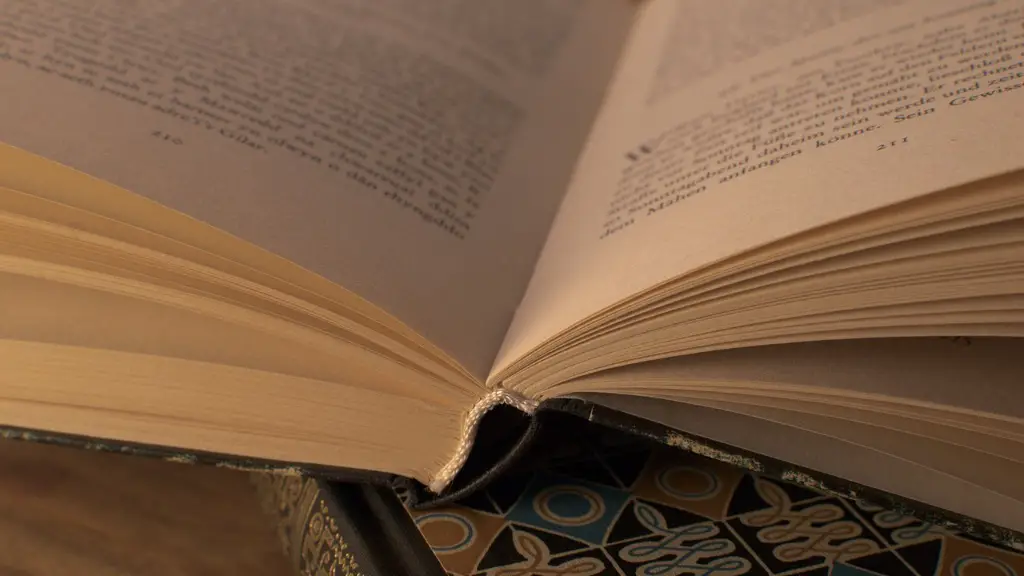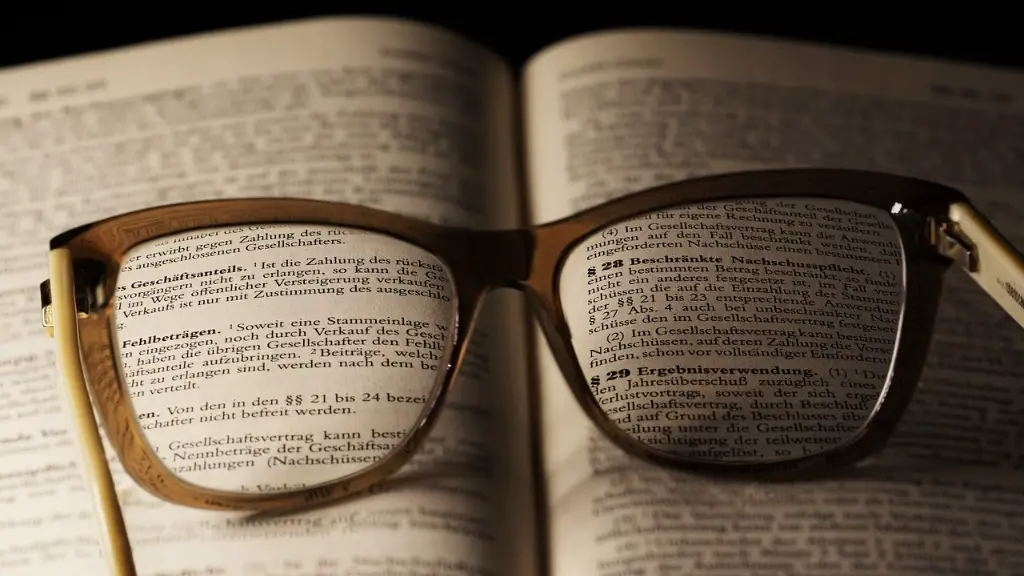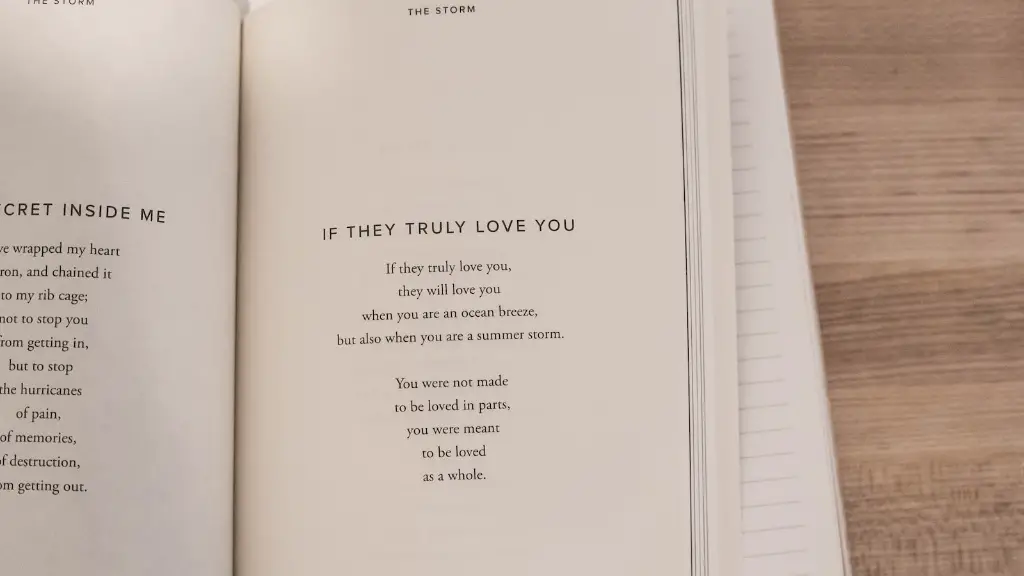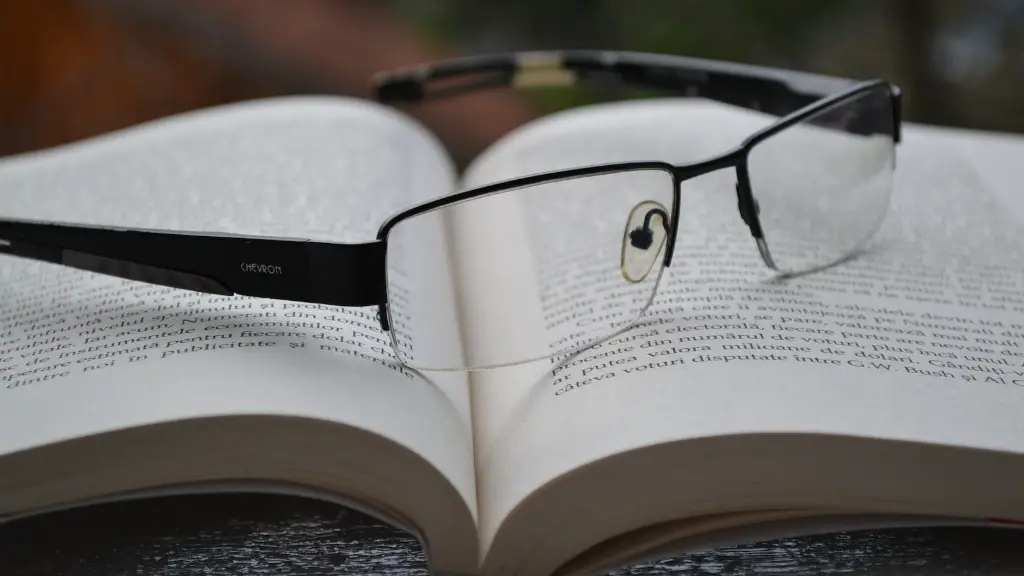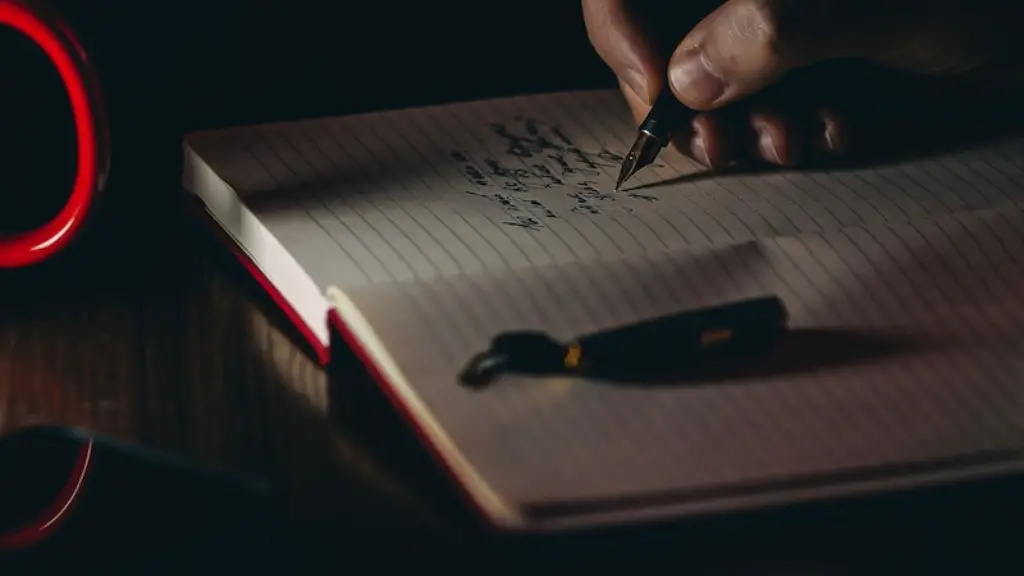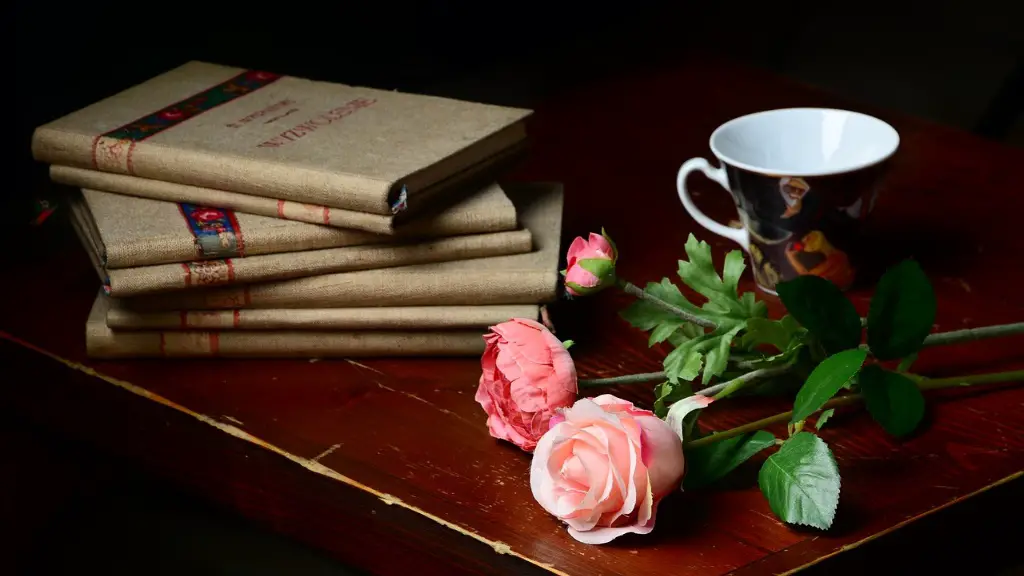Understanding the Relationship between Prose and Poetry
Prose and poetry are two very different literary genres that are often discussed in terms of their differences. But what do prose and poetry have in common? Many readers might be surprised to find out that the two genres actually have much more in common than they realize.
Most people consider poetry to be far more emotion-focused than prose, with added grace and flourish. But in actual fact there are many similarities between them. As ancient forms of storytelling and written communication, both of them can be used to explore themes, create a sense of rhythm, and provide insight into the human condition. Furthermore, both rely upon literary devices such as language, imagery, and symbolism to guide the reader to a deeper understanding of the text.
The main similarity between prose and poetry is that they both use figurative language to make certain ideas or points more tangible and vibrant. This can take the form of literary devices such as similes, metaphors, and personification. For example, a poet might compare their loved one to the sun to emphasize their warmth and brightness, while a fiction author might also use the same comparison to express their admiration. By using these devices, both genres are able to create vivid and powerful images in the reader’s mind.
Apart from figurative language, both prose and poetry also rely heavily on sound to convey meaning. This could be through the use of alliteration, assonance, and rhyme. They make use of sound to create a rhythm and create a mood or emotion for the reader. For example, a poet might use a series of words that contain a similar sound to evoke a particular feeling of hope and joy, whereas a novelist might use a similar technique to create a sense of dread and gloom.
Lastly, both genres hinge on the writer’s ability to express themselves. They need to make use of literary techniques, while also conveying their message in a way that resonates with readers. This requires skill in craftsmanship — whether it be in the form of crafting a story or constructing a poem.
The Role of Imagery
Imagery plays a huge role in both prose and poetry. By using imagery, a writer can create vivid and powerful images that can evoke different emotions in the reader. In prose, the imagery is often more subtle, as it uses language to describe concepts, actions and feelings. For example, a writer might use descriptive language to paint a picture in the readers’ mind of a certain situation or feeling. Whereas in poetry, the imagery can be much more direct, as it relies on powerful words, and metaphor to create impact.
In both genres, imagery can be used as a tool to convey an idea or emotion more effectively. For example, a poet may use a metaphor to compare their loved one to the sun in order to emphasize their warmth and brightness. Similarly, a novelist might use imagery to evoke fear and suspense, such as when they describe a stormy night or a deserted alley.
By making use of imagery, both prose and poetry are able to evoke powerful emotions and reactions in readers. Whether it be awe, joy, fear, or despair, writers can use imagery to create a visual of the story or poem and draw readers in.
The Power of Language in Prose and Poetry
The use of language is one of the main similarities between prose and poetry. Both rely heavily upon creative words and powerful metaphors to tell stories and evoke emotions in their readers. Words in both genres can be used to emphasize a certain idea, create a mood or atmosphere, and create a sense of rhythm and flow.
In prose, the language tends to be more subtle and indirect. Writers use language to create a story, set the scenes, and develop characters. Furthermore, the language in prose often conveys meanings that are more literal and concrete rather than abstract and figurative. In poetry, on the other hand, the language is often more direct, as it relies heavily upon figurative language, such as metaphors and similes. This allows poets to create more vivid and powerful images and draw readers into the poem.
In addition, language in both genres is also used to create a sense of rhythm and flow. In poetry, this is done through rhyme and meter, while in prose, the rhythm is created through word choice and punctuation. This helps to make the text easier to read and to create a sense of cohesion in the story.
The Emotional Impact of Prose and Poetry
Both prose and poetry have the power to make a strong emotional impact on readers. Writers can use language, imagery, and figurative language to evoke certain feelings in their readers. Through the use of evocative words, vivid imagery, and powerful metaphors, writers can tap into readers’ emotions and create a strong connection between themselves and the text.
The emotions that can be evoked in a reader can range from joy and love, to fear and dread. Poetry often relies more heavily on these emotions, as writers can use their words to paint vivid mental images and create powerful sensations in the reader. Prose, on the other hand, is often subtler, as it relies more on descriptors and story telling devices to create an emotional connection with its readers.
In both genres, the aim is to draw the reader in and evoke an emotional response. Whether it be through words, imagery, or symbolism, writers use a variety of tools to create an atmosphere and pull their readers into the story.
The Role of Symbols in Prose and Poetry
Symbols play an important role in both prose and poetry. They are used as a tool to convey certain feelings or ideas more effectively. In both genres, symbols can be used to evoke certain emotions within the reader, as well as to create a vivid image in their mind.
In prose, symbols can be used to represent certain concepts, such as love, hope, fortune, or grief. By making use of symbols, a writer can draw readers into the story and create a more powerful connection between the reader and the story. Similarly, in poetry symbols can also be used to create resonance, as they allow poets to convey messages more effectively without having to rely on a specific meaning of the words.
In both genres, symbols can be used to create a certain atmosphere or mood for the readers. In prose, for example, a symbol might be used to set the scene for a particular scene. In poetry, it could be used to create a mood or feeling for the poem. By using symbolism, writers are able to create a deeper understanding and connection between the reader and the text.
The Role of Structure in Prose and Poetry
The structure of a text is an important element in both prose and poetry. In prose the structure helps to create a sense of flow and tension, while in poetry it aids to create a rhythm, metre, or rhyme.
In prose, the structure of the text is often created by the writer’s skill in pacing. By using effective transitions and variety in sentence structure, a writer can create a sense of flow that allows the narrative to keep readers engaged. In poetry, the structure is used to create a sense of rhythm, metre, and rhyme. This can be done through the use of syllables and alliteration, which can help to create a lyrical quality that makes the poem more enjoyable to read.
The structure of both genres is also used to convey certain messages or feelings more effectively. In prose, this often takes the form of setting the scene or developing characters, while in poetry it can be used to create a mood or emotion within the poem. By making use of effective structures, writers can create powerful stories and poems that can evoke different reactions in their readers.
The Importance of Craftsmanship in Prose and Poetry
Both prose and poetry rely heavily on the writer’s ability to craft compelling stories or poems. Whether it be in terms of structure, word choice or imagery, readers expect a certain level of quality and skill in the text. In both genres, this requires an understanding of the techniques used to create effective narratives and poems.
In order to create compelling stories or poems, writers need to make use of literary devices such as imagery, symbolism, and figurative language. Furthermore, they also need to create a structure that is effective, and make use of language that resonates with readers. By using these elements, writers can craft powerful stories or poems that will engage their readers.
Apart from the technical skill, writers also need a certain level of creativity and imagination to craft compelling stories or poems. They should be able to develop vivid images, evoke certain emotions in their readers, and create powerful connections between the text and their readers. This requires an understanding of the target audience and what will evoke certain feelings or reactions.
Conclusion
Prose and poetry have many similarities, despite their different genre conventions. Both rely heavily on language, imagery, and figurative language to convey meaning and evoke emotion. They also use symbols and structure to create depth and interest in their stories and poems. Moreover, they require skill in craftsmanship in order to create unique stories and poems that draw readers in and make them want to keep reading.
